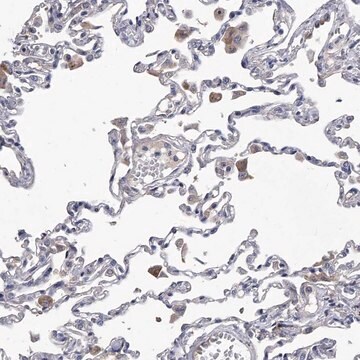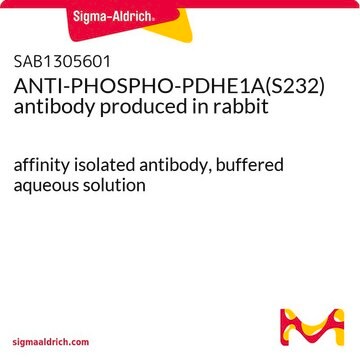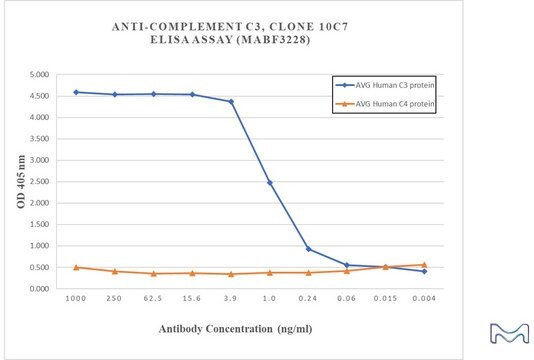MABF3095
Anti-Complement C5 Antibody, clone SIM 225-3.2.1
Sinônimo(s):
C3 and PZP-like alpha-2-macroglobulin domain-containing protein 4
About This Item
Produtos recomendados
fonte biológica
mouse
Nível de qualidade
forma do anticorpo
purified antibody
tipo de produto de anticorpo
primary antibodies
clone
SIM 225-3.2.1, monoclonal
peso molecular
observed mol wt ~188 kDa
purificado por
using protein G
reatividade de espécies
human
reatividade da espécie (prevista por homologia)
rat, guinea pig, porcine, goat, feline, canine, rabbit
embalagem
antibody small pack of 100
técnica(s)
ELISA: suitable
flow cytometry: suitable
western blot: suitable
Isotipo
IgG1
sequência de epítopo
N-terminal half
nº de adesão de ID de proteína
nº de adesão UniProt
temperatura de armazenamento
2-8°C
Informações sobre genes
human ... C5(727)
Especificidade
Imunogênio
Aplicação
Evaluated by Western Blotting with Human Complement C5 glycoprotein (non-reduced).
Western Blotting Analysis: A 1:5,000 dilution of this antibody detected non-reduced Human Complement C5.
Tested Applications
Western Blotting Analysis: A representative lot detected Complement C5 in Western Blotting applications (Monedero, M., et al. (2019). Comp Immunol Microbiol Infect Dis. 62:7-12).
Flow Cytometry Analysis: A representative lot detected Complement C5 in Flow Cytometry applications (Monedero, M., et al. (2019). Comp Immunol Microbiol Infect Dis. 62:7-12).
ELISA Analysis: A representative lot detected Complement C5 in applications (Monedero, M., et al. (2019). Comp Immunol Microbiol Infect Dis. 62:7-12).
Note: Actual optimal working dilutions must be determined by end user as specimens, and experimental conditions may vary with the end user.
Descrição-alvo
forma física
Reconstituição
Armazenamento e estabilidade
Outras notas
Exoneração de responsabilidade
Not finding the right product?
Try our Ferramenta de seleção de produtos.
Código de classe de armazenamento
12 - Non Combustible Liquids
Classe de risco de água (WGK)
WGK 1
Ponto de fulgor (°F)
Not applicable
Ponto de fulgor (°C)
Not applicable
Certificados de análise (COA)
Busque Certificados de análise (COA) digitando o Número do Lote do produto. Os números de lote e remessa podem ser encontrados no rótulo de um produto após a palavra “Lot” ou “Batch”.
Já possui este produto?
Encontre a documentação dos produtos que você adquiriu recentemente na biblioteca de documentos.
Nossa equipe de cientistas tem experiência em todas as áreas de pesquisa, incluindo Life Sciences, ciência de materiais, síntese química, cromatografia, química analítica e muitas outras.
Entre em contato com a assistência técnica








